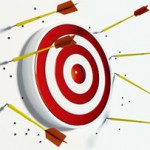One of the main reasons I am skeptical of the predictions of status quo climate science is that those predictions are entirely based on the output of computer models. As a Ph.D. chemist part of my training exposed me to chemical computer modeling and I quickly learned how easy it is to get results that do not conform to reality. Computer models have their place, but that place employs very narrow constraints on both the number of variables and the degrees of freedom of those variables.
Today I came across this article in C&EN (Chemical and Engineering News) the weekly news magazine of the professional society of which I am a member (American Chemical Society). Anyway, in it the article they discuss a new article (J. Am. Chem. Soc. 2015, DOI: 10.1021/ja5111392) that shows that computer models meant to predict the reaction mechanism for a particular chemical reaction come up with wildly incorrect predictions that are so off base they are ‘not even wrong’ in the words of the studies author.
What I found most striking was this quote, “Theory, he [Houk] says, “is still not capable, and may never be capable, of predicting what happens, when many chemicals, four (emphasis added) in this case, are mixed in solution”
Did you get that? Even a mere four variables is too many for the best computer model to predict the outcome, pathway, and interplay in a highly chaotic system of a “simple” chemical reaction. And yet climate models, modeling not a mere collection of atoms in a flask but basically every atom in the atmosphere and oceans on the entire planet with orders of magnitude more variables, those models are 100% ironclad and sound and we should take their predictions to the bank.
Perhaps someday computers (quantum computing) will get us to that point, but that day is not yet here. At the end of the day the proof of scientific validity is in prediction. It is not sufficeint to simply predict “it will get warmer in the future” – anyone has a 50/50 chance of guessing correct on that one. You must predict to what extent and at precisely what rate (with reasonable error bars, not error bars larger than the magnitude of what it is you’re trying to measure).
